Will More Hummingbird Feeders Attract More Birds?
Over the last several years we have had one hummingbird. Just one. While there are about 20 different species of this bird in North America, I have no idea his variety. I just love his little self flitting about my garden. There are many perennials in the garden they love, such as late tulips, iris, and hosta. I planted a large stand of bold red Will Rogers Zinnia this year which the little guy went crazy for. I also set out a little hummingbird feeder for him and we celebrate in his adorable antics. Then I started thinking about one hummingbird feeder for one hummingbird. Perhaps if we place more hummingbird feeders out we will attract more hummingbirds?
Hummingbirds like exceptionally clean feeders. I change the feeders about every two weeks and make sure I wash them thoroughly with soap and water. While some insist on boiling the nectar before placing it out, I’ve found that simply shaking the water and sugar together until all the sugar melts work fine. Put the feeders out in the garden very early; as soon as the snow melts in order to have them available for early scout birds. If you get ants or bees invading the feeders, simply add a bit of petroleum jelly around the opening of each feeding hole or move your feeder to a different location. We added artificial red flowers to each of the hummingbird feeders because the hummingbird would come more often to check out the feeders if we did.
THE NECTAR FORMULA
- 1 part sugar
- 4 parts water
Shake well or boil and let cool, then pour in feeders.
THE EXPERIMENT
Set out 5 feeders in various locations all around my garden to see if the multiple feeders might attract more than one hummingbird. We attached artificial flowers to the feeders as the hummingbird seemed rather particular and did not recognize the red glass feeder as a feeder until it looked more like a flower.
I used Perky-Pet Hummingbird Feeders and a super-cool Wild Bird Banquet Station and several different garden shepherd’s hooks to hold the hummingbird feeders. I used a mix of blue glass feeders and red glass feeders.
THE RESULT
By the end of the season, it was clear that our experiment did NOT attract more hummingbirds. In our informal scientific study we noticed that when given a choice of red or blue Perky-Pet hummingbird feeders, the little hummingbird always chose red. In fact, the blue feeders would often fill with dead ants and other debris, then grow mold inside the feeder which we did not notice happening with the red feeders as they stayed clean for the most part.
When given the choice of all five feeders, the hummingbird would only sup from one feeder, the flat Perky-Pet red feeder that hung on the Wild Bird Banquet Station. It was his favorite and he didn’t prefer the others. He never did feed from the blue feeders, but towards late fall when the little guy was fattening up for his commute to the south, he would sometimes flitter between two of the red feeders and our Will Rogers zinnias from Jung Seed, always preferring “his favorite feeder” above all others. At this time we also saw one more hummingbird visit the feeders for about seven days. Our hummingbird, of course, defended his feeders and would not share with Hummingbird #2 (it’s their nature to be very territorial).
And so – the conclusion of my personal hummingbird feeding experiment is that red bottles seem to please the birds more than blue bottles for their nectar. Having a larger quantity of feeders does not necessarily attract more birds. However, if you have a lot of birds having more feeders could obviously help keep them in your garden. Get yourself some hummingbird feeders and start attracting your favorite happy little birds this season and conduct your own experiment.
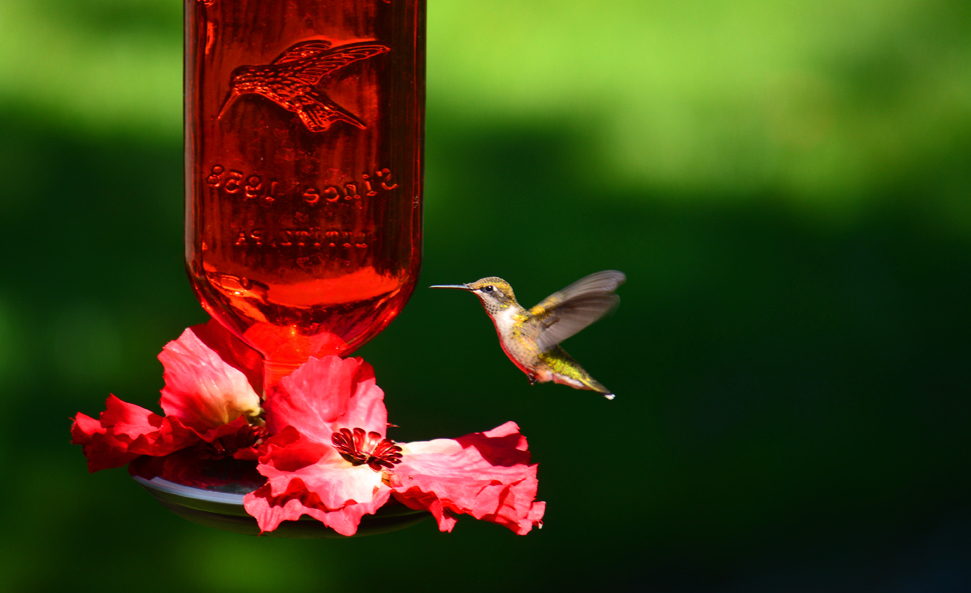
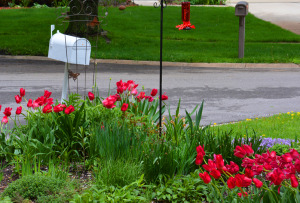
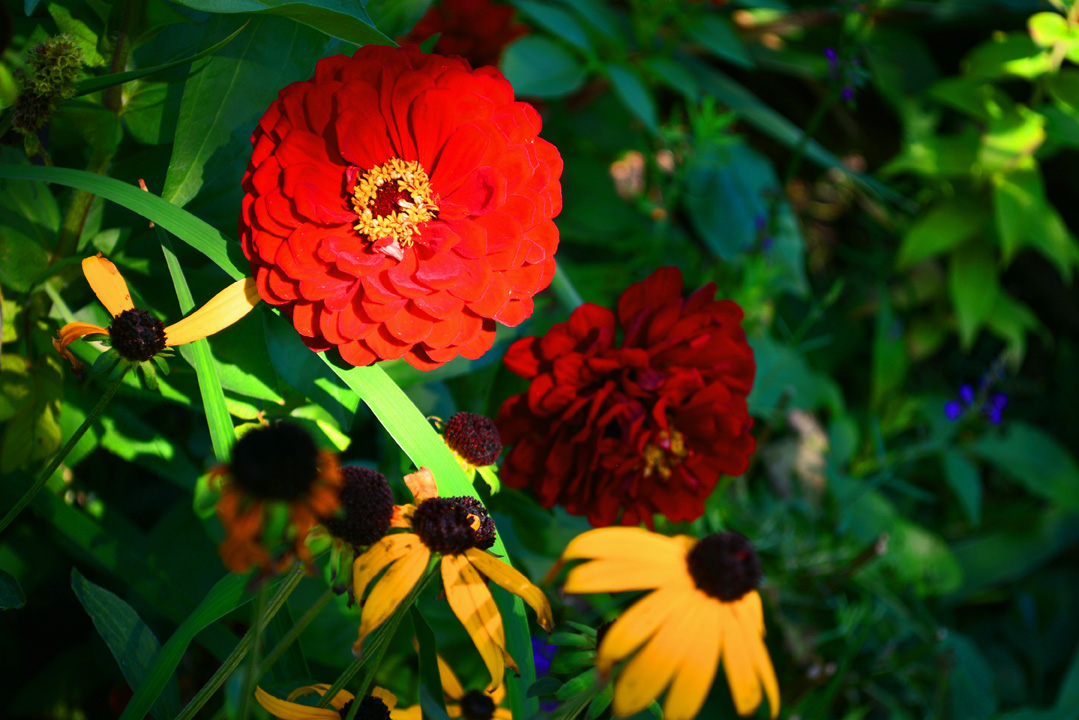
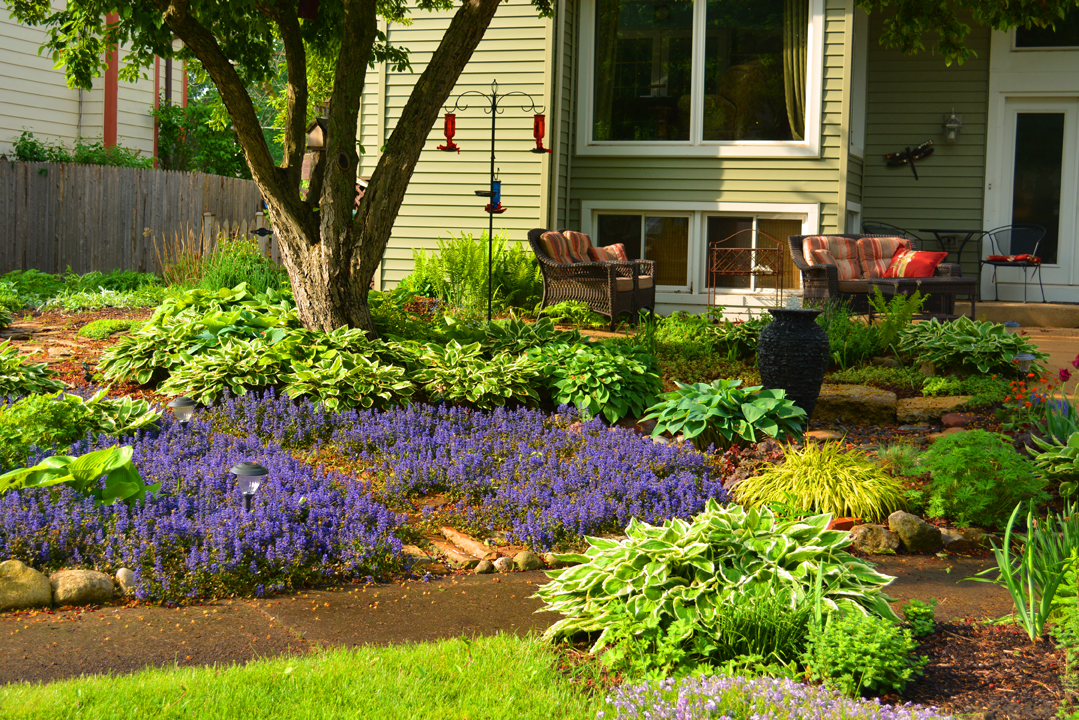
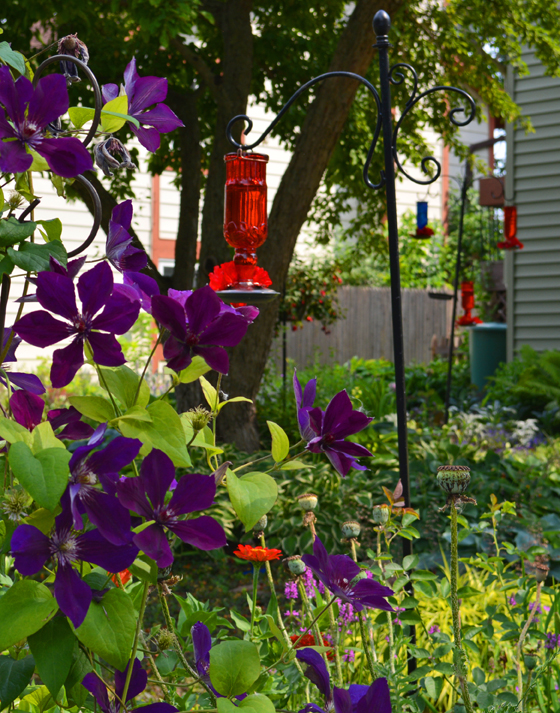
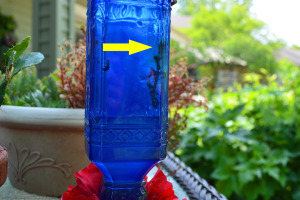
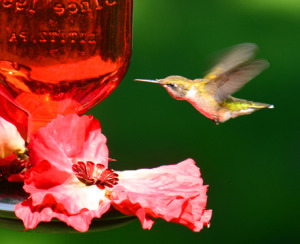
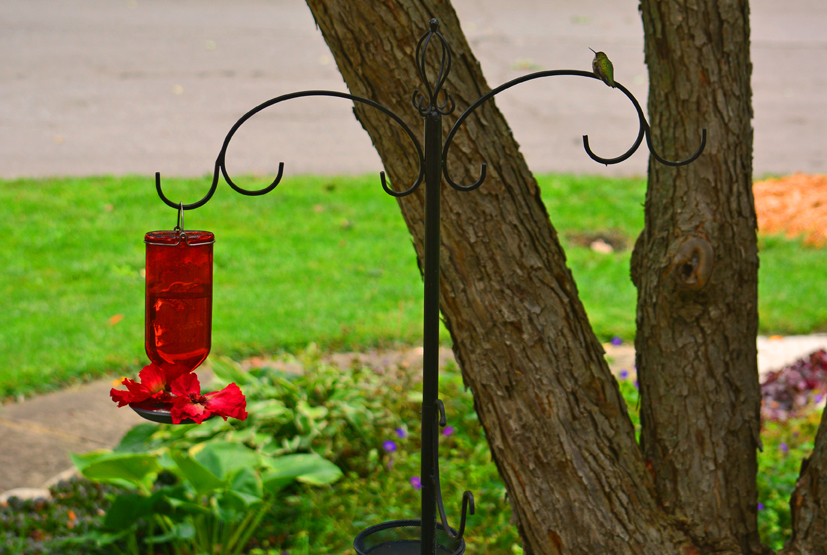
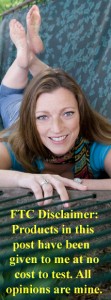
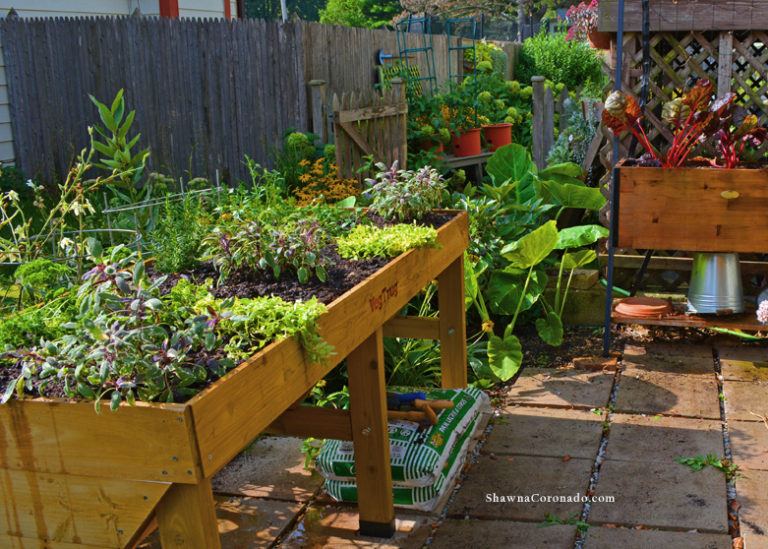

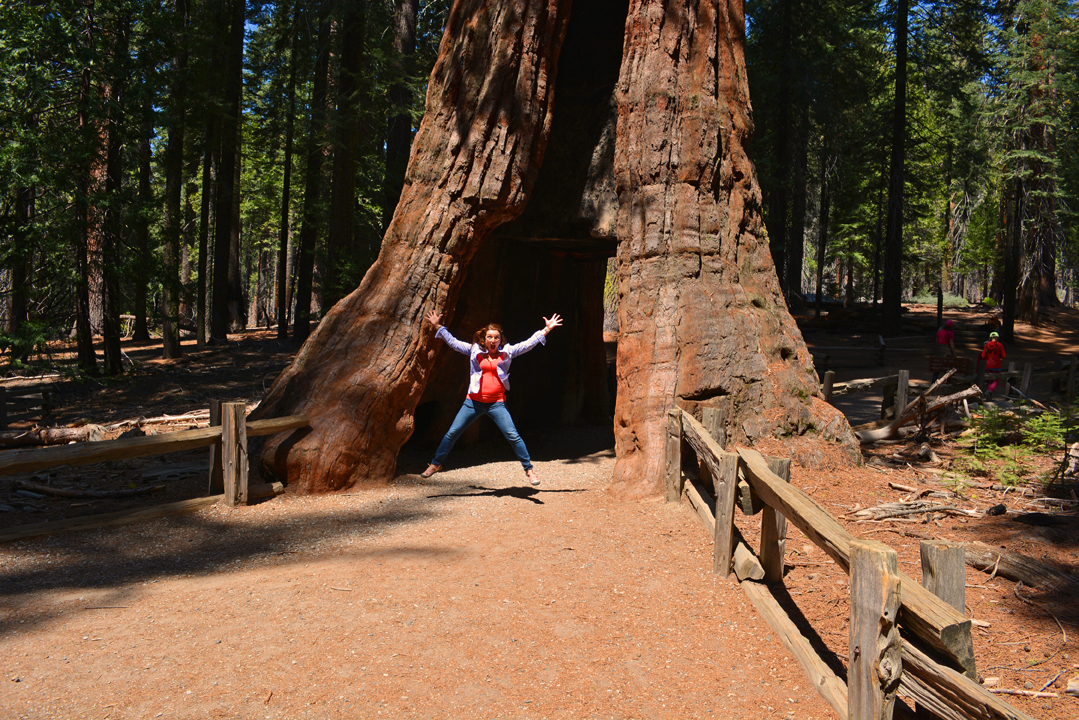
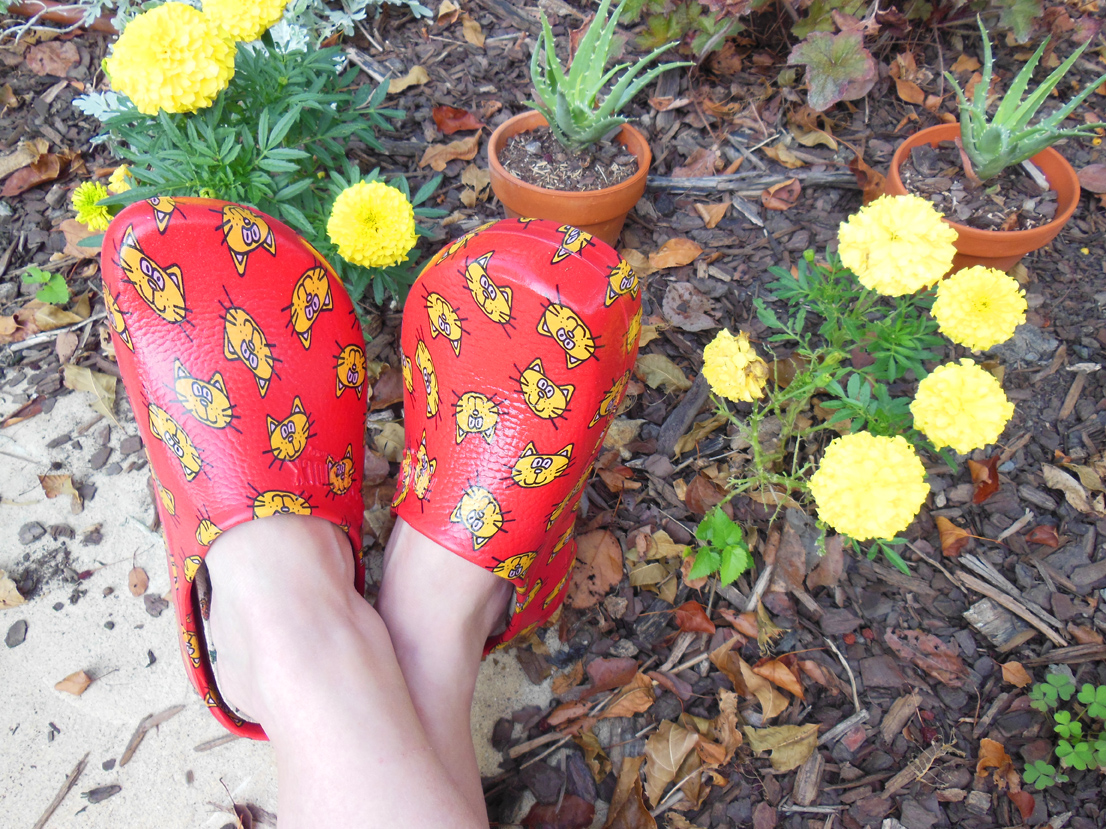
It’s a ruby-throated hummingbird, Shawna. That’s the only kind we have in our part of the country. Females don’t have a ruby throat though (it’s white), and the dark throat of the male only looks red if you’re looking pretty much straight on at it. Otherwise, it just looks brownish.
Thanks for the tips. They’re on their way to us and will be here soon! 🙂
Let me amend my comment. There ARE a few other types that are here, but we almost never see them, so it’s a pretty safe bet to say that yours is a ruby-throat. 😉
I’ve only seen the one type, in fact we’ve really only seen one or maybe two hummingbirds at a time.
Thanks for your comment! 🙂
Hi Shawna this article was really informative. I am starting a garden in my backyard and I was given a hummingbird feeder as a gift but I wasn’t sure if it will work. Since I haven’t seen many birds around my front garden. I think I will try to use the clear one I got and a red one and see which one works best. Thank you for this article.
You only change the feeders every two weeks!?! I’m in the Pacific Northwest, which is not known to be a really hot place, but I change the hummer juice at LEAST every two to three days in warmer months. After only a couple of days the juice starts to smell “off” sort of like fruit juice or lemonade that stood at room temp for too long. Just read recently, and wish I could remember the web address: fungus grows in hummingbird feeders, if the birds ingest it they can get a fungal infection of their tongues, and then they die. They recommend not only emptying out all unused juice every few days, but also scrubbing out feeders thoroughly with a brush. I use baking soda and vinegar, then rinse well with water before refilling. If you’re concerned about wasting all that unused sugar water, just don’t fill the feeders all the way full.
This week my Rufous ( and maybe a few Anna’s) hummingbirds are consuming 3 1/2 liters of hummer juice in 24 hours so it does not have time to spoil! Four feeders on my back porch seat 27 birds at a time, and there are often a few more waiting on the raspberry trellis. They nest in a huge cedar tree near my house. Love my little hummers.
How do you spot a hummingbird nest? Seems their so tiny it would be next to impossible to find with the naked eye. Any tips would be appreciated.